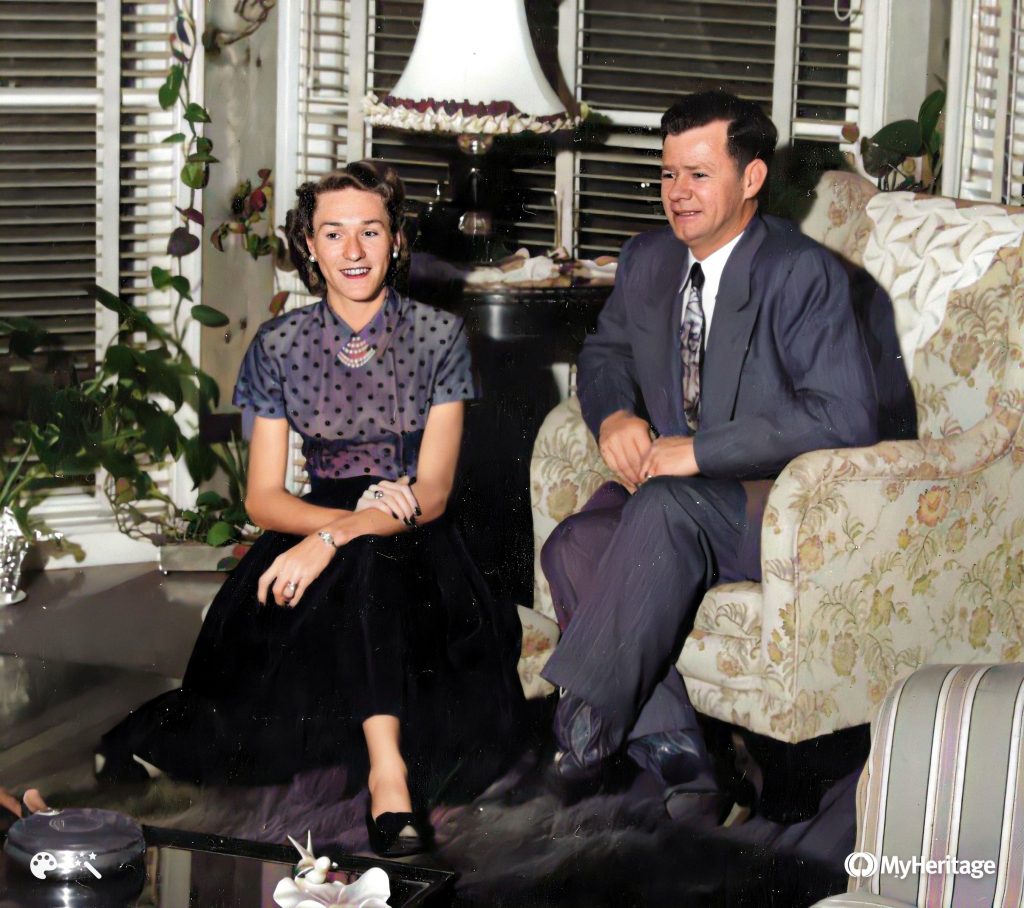
This work is a history and genealogy of the Townsend ancestors of Heather Townsend Fike. The Townsend, Burford, Harvey, and Mann ancestors immigrated to America and settled in Puritan New England or in the first permanent English settlement at Jamestown. Later generations moved westward from colonial America after the Revolutionary war. The Fisher, Eiler, and Fink families came to Texas from Germany in the 1800s.

Benedictus Townsend and Lucilla Light
Our earliest known Townsend ancestor is Benedictus Townsend. In 1974 Tula Townsend Wyatt published her great book “The Seven Townsend Brothers of Texas” (her manuscripts and research materials are on file at the Fondren Library at Rice University in Houston, Texas). The link below will take you to Familysearch where you can read the book online or download a pdf copy:
At that time it looked to Ms. Wyatt that the Texas Townsends were descended from Light Townsend, the Revolutionary War soldier. Later scholarship has led to a conclusion that the earliest known ancestor is Benedictus, Light’s uncle and that the Texas Townsends are descended from Light’s older brother John. Benedictus’ great-grandchildren removed to Georgia, Florida, and then to Texas.
Another good book is “A genealogy of the descendants of Benedictus Townsend and his wife, Lucilla Light of South Carolina” Compiled by Joseph T. Burval and Clarice T. Burval, 2006. The link below will take you to an online copy:
https://www.familysearch.org/library/books/viewer/125763/?offset=#page=1&viewer=picture&o=&n=0&q=
Both books have family stories and images of land grants and other interesting documents. You can also follow the link below to the Townsend Society of America website to learn more about the early family:
https://www.townsendsociety.org/cpage.php?pt=8
Our story starts in 1736 when Benedictus Townsend lived in Sussex County, Delaware with his wife, Lucilla Light, daughter of William Light. The Lights had lived since at least 1696, when John Light the elder, (Lucilla’s Grandfather) acquired the 200-acre estate called “Millfield”. Benedictus and Lucilla undoubtedly lived on the “Millfield” estate from the time of their marriage until they sold it in 1750 when they moved to near the Dan River in Granville County, North Carolina and in 1764 removed to what was to become Marlboro County, South Carolina.
The earliest record we are aware of concerning Benedictus Townsend is a Sussex County, Delaware deed dated 4 August 1736 wherein Benedictus Townsend and Lucilla, his wife, and Mary Light all of Sussex County deed a 300 acre plantation “situated… on the East and West side of a Branch called The Beaver dam branch…” to John Light. William Light, who died intestate, and was the father of Lucilla, Mary and John Light had owned this plantation. The land was transferred “for divers good causes and consideration of the full and just sum of three pounds lawfull money of America”. This deed likely was to provide John Light clear title to his father’s land, which he likely had title to under the right of primogeniture. This record places Benedictus in Sussex County in 1736. From the property description in the deeds, the “Millfield” plantation encompassed the Gitto Branch on the south side of Broadkill Creek in Sussex County, Delaware. Broadkill Creek is now called the Broadkill River. We were not able to determine the location of Gitto Branch. However, the location of “Millfield” is likely within a mile or two south of where present day Delaware Highway 1 crosses the Broadkill River.
We were unable to document where he resided during the period from 1751 to his appearance in South Carolina in 1764. However, we believe that he and his family were residents of Orange County during that time. Benedictus Townsend may have moved to South Carolina by 1764 as on 9 November 1764 he applied to the South Carolina Council in Charleston for 100 acres of land on the Northeast side of the Pee Dee River. A month later, on 4 December l764 he applied for an additional 50 acres on the “Waters of the Pee Dee River”.
On 18 January 1765, Benedictus was granted land described as One Hundred acres situate on Hilson Bay on Head of Muddy Creek North East side of great Pedee River, bound on all sides by Vacant Land. Surveyed the Twenty Seventh January One Thousand Seven hundred Sixty four for William Wood” Plat certified 6 Nov 1764. On 16 July 1765 he was granted additional land described as “Fifty acres in Craven County on the NE side of Pedee River bounded on all four sides by Vacant Land”.
These were Crown grants from King George III signed by William Bull Lieutenant Governor and Commander in Chief of The Province of South Carolina. The rent to be paid “every 25th day of March in every year at the rate of three shillings sterling or four shillings proclamation money for every hundred acres … the same to commence at the expiration of two years from the date hereof.” Benedictus, and his heirs were further obligated to “do yearly, and every year, after the date of these presents, clear and cultivate at the rate of three acres for every hundred acres of land”. These Crown Grants were offered as “headrights” to encourage settlers to come into the wilderness, clear and live on the land. The headright practice beginning in 1755 was to allow 100 acres for the head of the household and 50 acres for each additional person in the household be they male, female, free, or slave, white, or black. Thus his grant of 100 acres of land was for Benedictus, alone, which implies that his wife, Lucilla, may have died before 1764. Her death may also have been a reason for his leaving North Carolina. The second grant for 50 acres implies one other person was with him or possibly decided to join him shortly after he moved to SC based on the dates of the petitions.
Three of the four Benedictus sons removed to what was to become Marlboro County, South Carolina in the 1760’s. John Townsend (1740-1786) (ancestor) likely married his wife, Cortney, in Orange County, North Carolina about 1760 and began raising his family there. He removed to what was to become Marlboro County, South Carolina by 1771 where he acquired undeveloped land and continued to raise his family. The evidence suggests he died in Marlboro County, South Carolina before 1786. John and Cortney had eight children; most probably born in Orange County, North Carolina, but grew up to adulthood in Marlboro County, South Carolina.
By the 1800’s John Townsend (1740-1786)’s children began moving south into Georgia and by the 1830’s all, with the exception of his son, John Townsend (1760-1843) and daughter Rhoda Townsend (1765- ) had moved their families into Georgia and Florida. John’s son James Townsend (1763- ) moved into Georgia, with his descendants later moving into Florida. Thomas Townsend (1765-1828)(ancestor) and Light Townsend (1770-1851) also moved into Georgia in the early 1800’s and subsequently Florida by the 1820’s when public land began to be available in Florida. Thomas’s family moved to Texas in the 1830’s after he died in Florida.
The above suggests that Benedictus Townsend who does not appear on the quit rent scrolls, either removed from South Carolina or died there before 1769 as no further records on him have been found. As his sons remained for several years in South Carolina this implies that he likely died there before 1769. That is the basis we have used for his date and place of death. However, another possibility is that Benedictus moved back to Orange County, North Carolina after establishing his sons, William and Light on their own land in South Carolina. It could be that William and Light were not old enough to petition and own land in their own right, so Benedictus petitioned for it in his name and then transferred it to them when they came of age.
The earliest South Carolina record we have found on John Townsend is a South Carolina plat dated 25 October 1771 wherein John Bremar, Esq. DSG conveyed by survey “unto John Townsend … 200 acres situate in Craven County the NE side of big ready Creek bounded to the N.W….by the said Creek and Swamp and all other sides by vacant land … Surveyed on the 25th day of Oct 1771. The location of this land shows it to be some miles east of where Light Townsend (1745-1817) owned 100 acres of land “on Hilson Bay on Head of Muddy Creek” (now Rogers Creek) that he had acquired from his father, Benedictus. The granting of 200 acres also suggests that John had at least three people (one hundred acres for John and fifty acres for two others) in his household.
There is no evidence to suggest exactly when he moved into South Carolina however, one can infer that it was probably between 1764, when Benedictus Townsend arrived and 1771 the date of his earliest record in South Carolina. On 9 October 1775, Light Townsen and John Townsen signed a petition in St. David’s Parish, Craven County to the Council of Safety of South Carolina for the issue of officer commissions for Robert Lide, Thomas Poe and William Watkins to head a company of Volunteers in opposition to the British. This clearly establishes John Townsend (1740-1786) as joining the Revolution and is one of the documents that caused the Daughters of the American Revolution to declare John Townsend as an American Patriot.
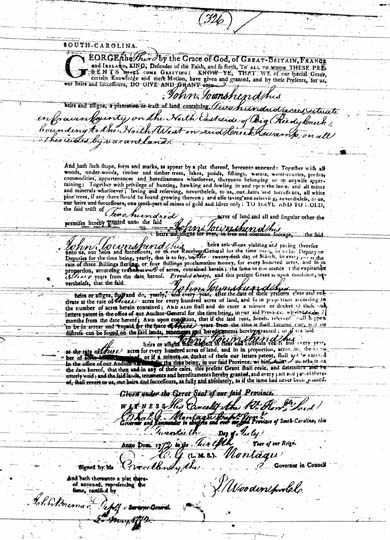
1772 Grant from King George III to John Townshend for 200 acres on northeast side of Big Reedy Creek in Craven County, South Carolina
Thomas Townsend was born circa 1765 at probably Orange Co., North Carolina. He married Elizabeth Stapleton circa 1795 at Marlboro Co., South Carolina. Thomas died in 1828 in Jefferson Co., Florida. Thomas Townsend (1765-1828) and his wife, Elizabeth, are named on a number of deeds in Marlboro County, South Carolina prior to 1815 and his family is found on the 1800 and 1810 Census of Marlboro County. He is not found in the 1820 Census of Marlboro County.
Thomas Townsend and his descendants are described in Tula Townsend Wyatt’s well-written and well-documented genealogy entitled “The Seven Townsend Brothers of Texas 1826-1838”. The reader is encouraged to seek Ms. Wyatt’s book that contains information on several additional generations of this family in Texas. According to Ms. Wyatt, Thomas Townsend and his wife, Elizabeth Stapleton, had eight sons and one daughter. They removed from Marlboro County, South Carolina to Mcintosh County, Georgia after 1815. In her book she says “Thomas and his wife…went on a visit to Bullock County, Georgia, where a son, Light, was born in 1808, while they were on this trip to Georgia. Finally in 1816 they sold their land holdings in South Carolina and moved to Georgia.”
They then removed to Jefferson County, Florida with some of their uncles and cousins by 1824. After Thomas’s death in 1828 in Jefferson County Florida seven of his sons went to Texas in the 1830’s and 1840’s.
Quoting from page 187 of Ms. Wyatt’s book: …Hearing of land offers in Texas some of the Townsends decided to come to Texas. They sent two of the brothers, Thomas R. and Spencer B., to investigate the offers and the living conditions. The brothers returned to Florida with a favorable report. As a result, they sold their properties, and they were all in Texas by 1838. Asa Townsend (Ancestor) came last. Their dead brother Thomas’ family came to Texas later.
The families were issued the following land grants in Mexico and the Republic of Texas:
Thomas R. Townsend: Spanish Grant 1835 in Houston County. Bounty grant for military service in the Texas Revolution 1836 in Colorado and Fayette Counties.
Thomas and his brother Spencer came to Texas in 1826 to investigate land offered to settlers by the Mexican government. They returned to Florida, sold their holdings, and, with another brother and their families, moved to Texas in the early 1830s. By 1836 seven of the Townsend brothers were in Texas. Thomas was granted a league of land in David G. Burnet’s colony and settled near what is now Crockett, on the Old Nacogdoches Road. His name, with Mustang Prairie as his stated place of residence, appears on the list of petitioners asking the Texas Congress to establish Houston County in 1837. The Townsend brothers enlisted during the Texas Revolution, and Thomas furnished beef and corn from his farm for the army. He also served in the Texas Ranger Company of Capt. Elisha Clapp. Townsend was in La Grange, Fayette County, on jury duty when he died on August 31, 1838. His grave in La Grange City Cemetery was marked with a tall limestone marker.
Moses Townsend: Spanish grant 1835 in Tarrant County, Bounty grant for military service in the Texas Revolution 1836 in Johnson County.
Stephen Townsend: Spanish land grant in Robertson County. Bounty grant for military service in the Texas Revolution 1836 in Johnson County.
The family of Stephen Townsend arrived from Florida in 1826, and the name Townsend was the first to be associated with the site of Round Top. The family established a Presbyterian Church, Florida Chapel, and founded a Masonic lodge. The Townsend family had the distinction of sending more men to the battle of San Jacinto than any other family.
Spencer Townsend: Spanish grant 1835 in Robertson County; Bounty grant for military service in the Texas Revolution 1836 in Tarrant County.
William T. Townsend: Spanish grant 1835 in McLennan and Freestone Counties; Bounty grant for military service in the Texas Revolution 1836 in Coryell County.
Asa Townsend (Ancestor): Republic of Texas grant 1836 in Colorado County.
In Columbus on April 19, 1845, he served on the committee that drafted the preamble and resolution for the annexation of Texas to the United States.
Stapleton Townsend: Military service land grant 1842 in Fayette County.
Asa Townsend and Rebecca Harper
Asa and Rebecca came to the Republic of Texas in 1838. His younger brothers moved from Florida a few years earlier and helped Texas win independence from Mexico. Asa was the eldest child in a family of nine. He grew up in the Marlboro district of South Carolina and attended school at an academy in Anson County, North Carolina. About 1816 Asa and his parents moved to Bullock County, Georgia, and then to McIntosh County. It was there that he met and married Rebecca Candacy Harper, the daughter of Leonard Harper. When Florida became a territory of the United States in 1822 Rebecca and Asa moved with his parents and siblings to Madison County and then to Jefferson County Florida. They were joined there by their Uncles Light and John along with many cousins from Marlboro District, SC.
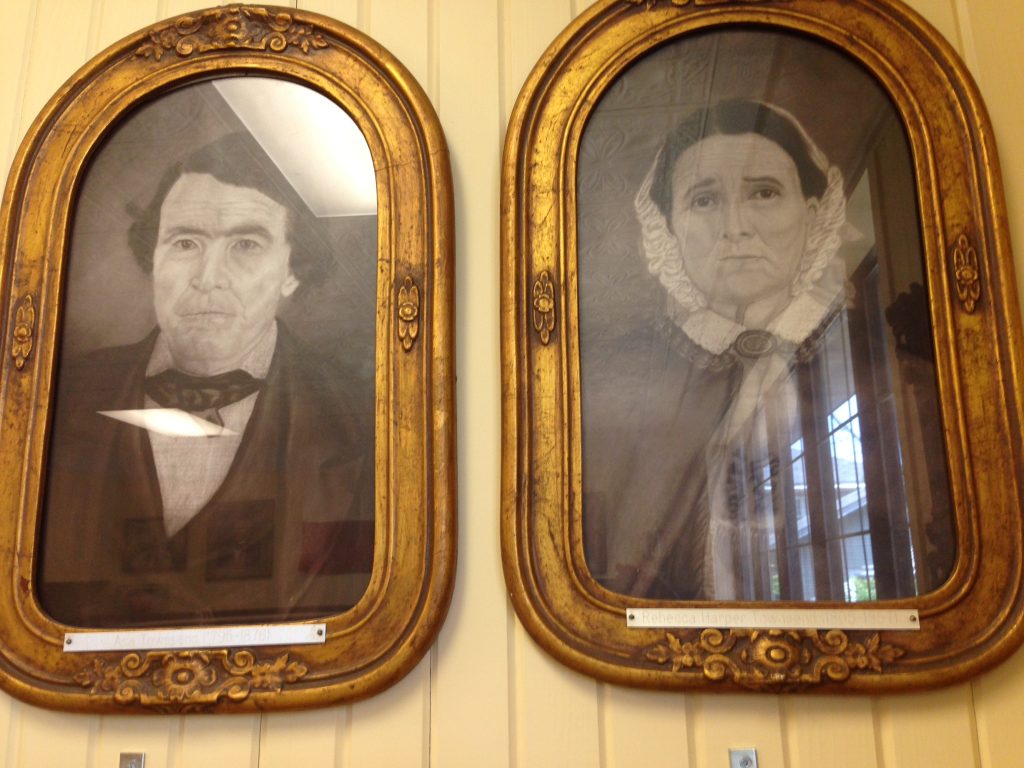
In 1827, when Jefferson County was organized, Monticello became the county seat. Asa was elected one of the first commissioners. The deed books of both counties show Asa, his father Thomas and his brothers as large land owners. Having the desire to expand and own more land, they heard of the land offers in the Mexican State of Texas. In 1826 two of the brothers, Thomas Roderick and Spencer Burton, made the long trip to Texas to investigate these land offers. They returned, after several months, with favorable reports. The father, Thomas had a bounty land grant from the war of 1812 which he had lived on from May 1, 1826. This deed is recorded in Deed Book A, pages 14 and 15 of the deed records of Jefferson county. Thomas died there on 18th of October, 1828. That same year the brothers started the long move to Texas as they sold their lands in Florida. See Book A page 18 of Jefferson County Deed Records. They moved across country in wagon trains.
By February of 1838, Asa and Rebecca with their family had arrived in the New Republic of Texas. Like his brothers he applied for land and received 640 acres in Colorado County near the town of Borden, between Columbus and LaGrange. The grant is in third class patent records of the General Land office in Austin Texas, volume II, page 263.
He developed this land into a working ranch, where he raised cattle and fine race horses. He erected a long log cabin for his family and put up a row of slave cabins. He built barns and stalls for his horses and grew cotton, hay, corn, and the necessary food for the large family and the slaves. He and Rebecca had fifteen children, three of whom died young. The other twelve grew up on the ranch, married, and had children of their own.
Asa Townsend was initiated into the Fayette Lodge no. 34 as a master mason in 1847, at LaGrange, Texas. He was secretary of the Lodge in 1848. He later moved his membership to Caledonia Lodge no. 68 in Columbus, and became treasurer in 1850.
In 1857 Rebecca “Reba” died and was buried in the Borden Cemetery, Colorado County.
The Grave Stone reads as follows: “Sacred to the memory of Rebecca L., wife of Asa Townsend, Born in lrwin Co. Georgia October 17, 1805. Died in Colorado Co. Texas May 28, 1857 – aged 51 years 2 months and 11 days.
Asa lived past his eightieth year and died in 1876. He was buried along-side his wife in the Borden Cemetery, and his tombstone reads as follows: “Sacred to the memory of Asa Townsend, born Marlborough Dist. S. C. December 14, 1795, Died in Colorado County Texas, September 22, l876, aged 80 years 9 months 8 days. An honorable and upright citizen. A kind and indulgent husband and father who died in the full triumph of a Christian Faith.”
Another family story of Asa’s life:
Asa spent his childhood in the part of South Carolina his grandfather had settled two generations before. He was still in his teens when the family moved to Georgia. Here he met and married Rebecca Harper about 1823. Their family had increased to 2-boys and 2 girls when they “Pulled up stakes” and moved to Florida in 1824. Two more sons and two more daughters were born there, including Mary, Grandpa Marion Hope’s mother. After 7 or 8 years in Florida, Asa moved his family again, this time to Texas.
Columbus, Texas, in 1838 was struggling back to life after being burned by Sam Houston during his retreat in 1836. Asa was granted a headright of land (640 acres) by the Republic of Texas, about 10 miles west of town, near what is-now the-Borden Community. Here they cleared the land and made their home.
Indians were a threat in those days. Although the last raid on Columbus itself occurred in 1838, the savages continued to molest isolated families for several more years. One tribe was especially detested by the settlers. The Karankawas were probably the only real cannibals in North America. They were seldom brave enough to attack armed men but women and children were sometime kidnapped and a horrible fate would follow. Other tribes who roamed the area were the Tonkawas and the Comanches. Trouble with Indians wasn’t long in coming. Being warned of an impending raid (some say by a friendly Indian) Asa escaped with his family to Columbus, where they remained till the trouble died down. They returned to find their home vandalized by the savages.
Asa and his sons rebuilt, and the family continued to grow. By 1848, 14 children had been born, 10 sons and 4 daughters. The new territory prospered, and Asa along with it. By the time the War Between the States broke out, his total assets amounted to more than $60,000, including a dozen slaves or more. He became active in civil affairs, serving on various County Boards and Committees, and in 1845, he served on the state committee that drafted the Petition for Statehood.
In 1857 Rebecca died, and Asa remarried. In 1861 he saw many of his sons and sons-in-law go off to war – some never to return. The Civil War brought financial loss, but Texas was spared the destruction and severe hardship experienced by the rest of the Confederacy.
The Townsends capitalized on the post-war cattle boom, and Asa lived to see the beginning of a political dynasty in Colorado County, forged by his, sons and grandsons, that would last into the Twentieth century. In May, 1876, The Colorado Citizen (newspaper) reported him as being “91 years old and in good health” but death came that same year, in September.
After the civil war, fortunes drastically changed. Where before wealth had been measured in land and slaves, now it was determined by how many cattle you could move to eastern markets. Many a prominent family was left penniless, while others who had nothing before the war suddenly became cattle barons. Most of the Townsends rode with the tide and became successful in the cattle business. It was Asa’s son James though, who became the most prominent member of the family during the 1870s and 1880s. In addition to cattle interests, he owned a large general store in Columbus.
Asa’s Obituary: “Asa Townsend died at the house of his son, Mr. H. S. Townsend, on the 27th September; Mr. Asa Townsend in the 81st year of his age. The deceased was born in Marlboro District, South Carolina on the 14th December, 1795. In his early manhood he removed to Georgia, where he married and lived for about twenty years. From Georgia he went to and remained for a short time in Madison, Florida, and from thence with a devoted wife and 9 children he came to Texas in the fall of 1837, and settled in Columbus in the spring of 1838, where or in its vicinity he has resided ever since. His children here increased. Twelve of whom, 8 boys and 4 girls, lived to be settled with families of their own. He buried the wife of his youth, and mother of his children in 1859. He afterwards married a second time, and has left a widow to mourn his loss.
His descendants at his death numbered 81, just the number of his years. Uncle Asa, as he was generally and familiarly called, brought to our State “a sound mind in a sound body.” A man of great energy, industry and capacity, (qualities that have descended to his numerous progeny,) he has left his mark upon society for good such as few have been permitted to rival. To those who remembered his massive frame and Herculean strength, it was sad to see him as he passed among us under the weight of his four score years, leaning upon his staff and tottering to his tomb. But it is written “dust thou art and unto dust thou shalt return,” and we are traveling on. In early life Uncle Asa dedicated himself to God, and the good and at the altars of the church, contracted an alliance with Heaven. Through the vicissitudes of an eventful life often unfavorable to the development of Christian character, he was true and faithful, and at the last found that he had not followed a cunningly devised fable. But that God whom he had served and trusted sustained and cheered him in his age and infirmity, and gave him a safe and triumphant passage across the dark river.
An incident, uncommon and beautiful, occurred a day or two before his death. The day was warm, and the door and window was open, he was lying upon his couch, quiet and peaceful, his wife and daughter sitting by, when a dove of full and beautiful plumage came through the door, and hovering over him, settled down upon his bosom, and without apparent alarm, fluttered its wings. His wife reached out a hand to take the bird, but forbore at the suggestion of the daughter. It again fluttered its wings, and after two or three times turning slowly around, it rose and went out at the window. The last conversation he had just prior to his death was with two daughters who had died years ago, desiring them to come to him, and speaking to them as though they were bodily present and visible to him and who will affirm they were there.
Uncle Asa was a charter member of the Masonic Lodge, at Columbus, respected and believed by his brethren; and they with the assistance of the Lodges at Weimar and Osage, with the beautiful and impressive ceremony of that order, laid him away, in the presence of a large assemblage of friends and acquaintances, with his former wife, with trust in God and faith in immortality. [Interment in Borden Cemetery].” The Borden Cemetery where the family is buried is between Weimar and Columbus Texas on the North Side of US 90. It is is well maintained and easily visible from the road.
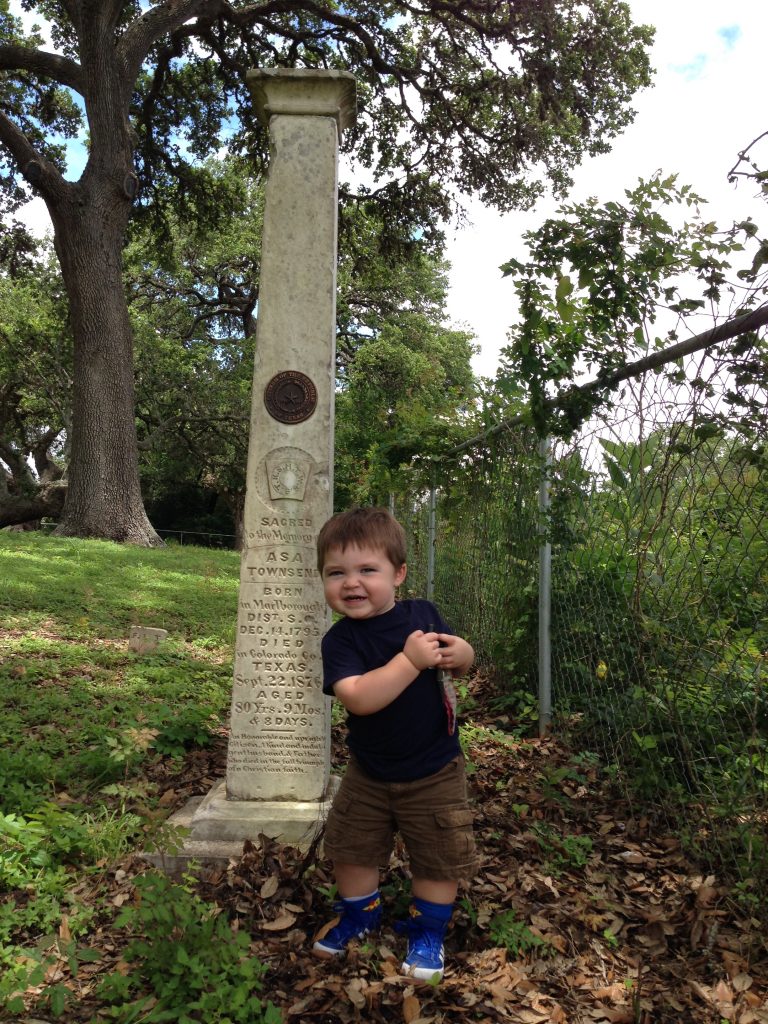
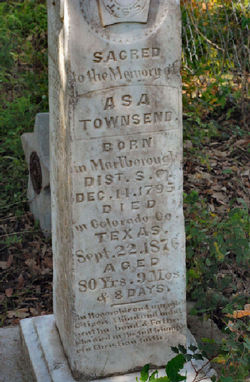

9 Generations – Bruce Wamhoff in 2014 by his 6th great grandparents Asa and Rebecca Townsend’s Graves in the Borden Cemetery
Leonard Harper
“Leonard Harper Sr. (1735-1822) is the progenitor of the large Harper Family of Irwin and Coffee Counties, Georgia. Leonard was born abt. 1735 in Peas Creek, NC, according to “Huxford’s Pioneers of Wiregrass Georgia”. (Asa’s wife’s great-grandfather)
According to Huxford, Leonard Harper Sr. came to Liberty Co., GA (which was later cut into McIntosh Co.), with his son, Leonard Jr., during the Revolutionary War. In the Surveyor’s General Dept. in Atlanta, GA, there are four headgrants issued to Leonard Harper and perhaps his son, Leonard Harper Jr.
Upon arriving to survey the ground for one of his headgrants (which you could receive by paying a filing fee of $5.00) Leonard found a house had been constructed and someone was living in it. The man residing there invited Leonard in, gave him a meal and a bed for the night. The following morning Leonard rose, pulled the title for the headgrant from his pocket, and told the hospitable gentleman that the property now belonged to him.
Life on the new frontier was perilous and Indians were an everyday part of the lives of Leonard and his family. The Creek Indians made a raid on Leonard’s plantation in Liberty Co., in 1788. The Indians made away with his horses and hogs and, according to family lore, the house was burned and all of Leonard’s tools along with miscellaneous items were taken. Leonard’s wife and children hid in the bushes during the raid. Leonard later found the tools and other items buried in his field when he was plowing. Leonard Harper Jr. filed a claim with the Indian Claims Bureau on behalf of himself, and his siblings, as a result of this raid. The claim was paid. (These records can be obtained from the Bureau of Indian Affairs, Washington, D.C.)
Emily Gray Martin, Gentlemen and Their Ladies – Gray Family History, states that Leonard fought in the Revolutionary War, participating in the battles of Troy and Sumpter. It is said that he had the fastest horse of any, having outrun the British on at least one occasion. With the British in pursuit Leonard approached a wide gully. He and his horse jumped, the British came to the edge and stopped.
Leonard Harper, Jr.
Leonard Harper (1750-1842) was born on Peas Creek in North Carolina, about 1770, and came with his father, Leonard Harper, Sr. to Georgia during the Revolutionary War. The family settled in Mclntosh County where the elder Harper died in 1822.
Leonard about 1822, moved to Florida, but within three or four years moved back to Georgia and settled in the county of Irwin. His home and plantation was near the present village of Lax, Irwin County; it was there he died in 1842. His will was probated in January, 1843, in lrwin County Court of Ordinary. His wife, Susannah, was born 1790 in South Carolina; maiden name unknown. She died about 1860.”
Moses Solon Townsend, Sr. and Annie Harvey
Moses Solon Townsend was the son of Asa and Rebecca Townsend. He was born on 23 October 1830 in Jefferson County Florida, about the time that the Townsends started their move to Texas, and died on 8 Sep 1867 in Columbus Colorado Co., TX.
Annie Harvey’s mother, Rebecca Burford, is descended from some of the earliest colonial Virginia planters.
You can follow this link to learn about the Burford, Hervey, Basse, and other Townsend Ancestors who immigrated from Europe to Jamestown and other Virginia locations in the 1600s.
When he was a young child Moses and his family left Florida and in 1838 settled in Colorado County near Borden between Columbus and LaGrange on their original 640 acre land grant. Moses grew up with his fourteen brothers and sisters. He helped train his Father’s race horses and did other chores around the working ranch. He married Annie Elizabeth Harvey “Annabet” on 8 May 1857 in Cuero, Dewitt County, Texas and the couple had four children. When the war started Moses answered the confederate cause and served as a Lieutenant in Colonel Griffin’s regiment.
Moses S. Townsend’s Civil War Service:
The 21st Infantry Regiment was organized during the spring of 1864 by consolidating the 11th (Spaight’s) Texas Cavalry and Infantry Battalion and Griffin’s Texas Infantry Battalion. In the spring of 1864 the regiment was on duty at Galveston and was stationed along the Texas coast throughout that year and served at Sabine Pass and Matagorda Island. In Texas the men of the regiment saw no combat; they served primarily as scouts and performed garrison duty. After a short assignment at Marshall, Texas, during the winter of 1864–65 the regiment moved to Shreveport, Louisiana. The regiment served there until April 1865 without any combat. The Twenty-first Infantry then returned to Texas and disbanded in May1865 shortly before the surrender of the Trans-Mississippi Department in June 1865.
A short time after he returned from the war he drowned in Rocky Creek near Columbus. He was buried in Grace Farm about 4 miles north of Columbus on FM 1890 near Shaw’s Bend. Annabet remarried in 1879 Edwin Waller of Colorado County. She died sometime later and is buried with her first husband on Grace Farm.

Location: southwest of FM 1890 about 3.5 miles west of its intersection with State Highway 71, about 100 yards to the South and across a ravine from the much larger Fitzgerald Cemetery. The Cemetery is on private property and is not visible from the road. To visit the location you need permission and an escort from the property owners. In 2014 the cemetery was overgrown and the grave markers were in poor condition.
Universal Transverse Mercator coordinates: 14, 727509E, 329519N (NAD83/WGS84) 72˚72’75”W, 32˚95’19”N
Earliest known year of death: 1857 Earliest known year of birth: 1801 Most recent known burial: 1878 Comments: This cemetery is often combined with the Fitzgerald Cemetery and referred to as the Fitzgerald-Grace Cemetery. The two cemeteries, however, are quite distinct from each other.
https://www.findagrave.com/cemetery/3871/grace-cemetery?
Rebecca Clack Burford Townsend Grace died, at her residence in Colorado County on the 3rd of September, 1878, Mrs. Rebecca C. Grace, of inflammation of the bowels, aged about 58 years. The deceased was an old citizen, an exemplary lady with many virtues to endear her to her large list of acquaintances. Our sympathies are extended her bereaved relatives in this their hour of sorrow. [Interment in the Grace Cemetery]
Colorado County Citizen, Sept 5, 1878
It is our sad duty to chronicle the death of our dear friend, Mrs. R. C. Grace. She was born July 19, 1820, died Sept 4, 1878. “Blessed are the dead who die in the Lord.” Fifty-eight years of faithful service was accorded her before the great “I AM” released her from all suffering and toil, saying “Tis enough, come up higher.” She was a faithful friend, a loving and self-sacrificing mother, a devoted Christian, whose fight in every walk of life, shone with a brilliancy surpassed by few. Possessed of a sound judgment and fine intellect, she was the source of great comfort and assistance to those who sought her advice; ever willing to extend a helping hand to her weaker sisters in their hour of need. Bearing her own sorrows and disappointments with patient fortitude, looking ever to a higher power for comfort, amid the many vicissitudes of her life, she took up her cross and bore it bravely to the end, and has now triumphantly crossed the dark river and rejoicing with the loved ones gone before. To those now bowed in grief and left in the stricken home, we extend our deepest sympathy. For comfort we can hope they will look to One who alone can give it. “She has gone to the grave, but ’twere wrong to deplore her, When God was her ransom, her guardian, her guide; He gave her, and took her, and soon will restore her, Where death hath no sting since the Savior hath died.” Colorado County Citizen, Sept 26, 1878.
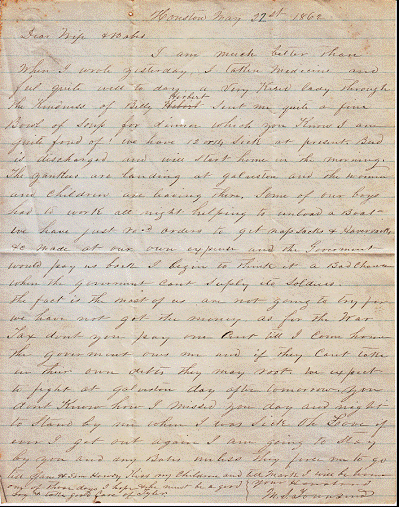
Rebecca Clack Burford Townsend Grace
Died, at her residence in Colorado County on the 3rd of September, 1878, Mrs. Rebecca C. Grace, of inflammation of the bowels, aged about 58 years. The deceased was an old citizen, an exemplary lady with many virtues to endear her to her large list of acquaintances. Our sympathies are extended her bereaved relatives in this their hour of sorrow. [Interment in the Grace Cemetery]
Colorado County Citizen, Sept 5, 1878
OBITUARY
It is our sad duty to chronicle the death of our dear friend, Mrs. R. C. Grace. She was born July 19, 1820, died Sept 4, 1878. “Blessed are the dead who die in the Lord.” Fifty-eight years of faithful service was accorded her before the great “I AM” released her from all suffering and toil, saying “Tis enough, come up higher.” She was a faithful friend, a loving and self-sacrificing mother, a devoted Christian, whose fight in every walk of life, shone with a brilliancy surpassed by few. Possessed of a sound judgment and fine intellect, she was the source of great comfort and assistance to those who sought her advice; ever willing to extend a helping hand to her weaker sisters in their hour of need. Bearing her own sorrows and disappointments with patient fortitude, looking ever to a higher power for comfort, amid the many vicissitudes of her life, she took up her cross and bore it bravely to the end, and has now triumphantly crossed the dark river and rejoicing with the loved ones gone before. To those now bowed in grief and left in the stricken home, we extend our deepest sympathy. For comfort we can hope they will look to One who alone can give it. “She has gone to the grave, but ’twere wrong to deplore her, When God was her ransom, her guardian, her guide; He gave her, and took her, and soon will restore her, Where death hath no sting since the Savior hath died.”
Moses Solon Townsend, Jr. and Mary Fink
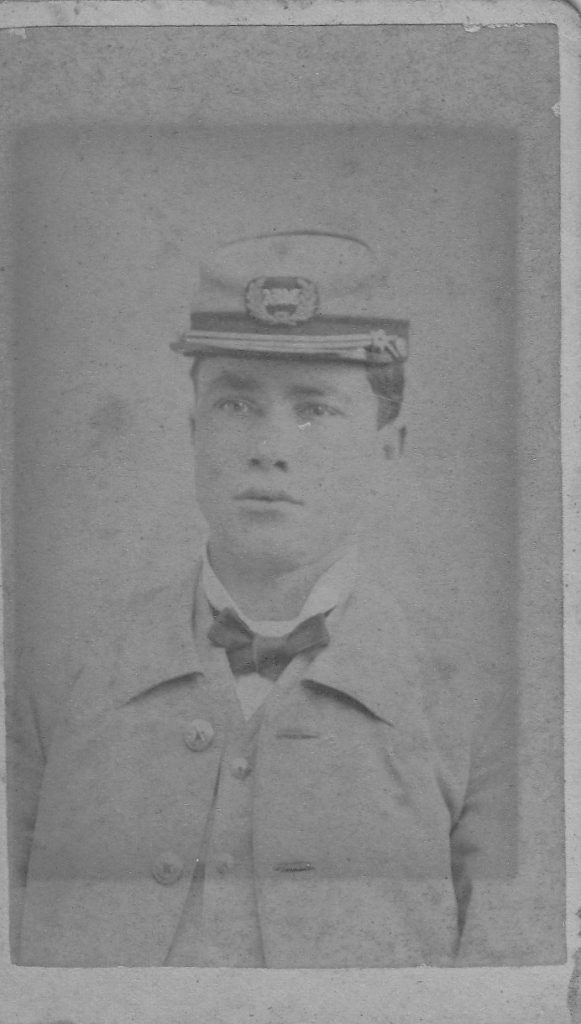
Moses Townsend, Jr. and his wife Mary Agnes Fink were the first of their families born in Texas. Moses’ father was born in Florida before the Townsends removed to The Republic of Texas. Mary’s parents were born in Germany and Holland and moved to Texas to seek their fortunes in the new Republic. Both of their fathers died while they were very young. Moses’ mother died when he was 13 years old. Moses was educated at Texas A&M and a business college in Austin. He leveraged that education to secure a career with the railroad and later as that mayor of Hallettsville, Texas. Mary’s parents were successful entrepreneurs in LaGrange, Texas and the family name is still well known in that area.
From a M.S. Townsend Biography: “Hon. M. S. Townsend. A great deal of very desirable and most advantageously located property is to be found on the books of the gentleman whose name heads this sketch, who is now not only the popular Mayor of Hallettsville, Texas, but a very successful and reliable real estate dealer. Moses Solon Townsend was born in Colorado County, Texas, April 29th, 1864, and his parents, Moses S. and Annie E. (Harvey) Townsend, were natives of Georgia and Tennessee respectively. His grandfather, Asa Townsend, came to Texas from Georgia in 1836. In this family there were eight brothers, who settled in Colorado and Fayette Counties, and they all married and reared families. Many of their descendants now reside in this section.
When our subject was three years old his father died; the mother married again in 1874. She died in 1879, Moses S. grew up in his native county, received his education there and at A. & M. College, Bryan, where he attended the sessions of 1881-2-3, and in 1884 he attended the Capital Business College at Austin, from which he subsequently graduated. Following that he taught two months in the school and then became telegraph operator for the Southern Pacific Railroad Company for two years.
In August, 1887, he went to Yoakum as agent of the S. A. & A. P. R. R., and was in charge of this office until February, 1888, after which he was transferred to Hallettsville. This office he had charge of until May, 1890, when he resigned. In April of the same year he was elected Alderman and served until December 15 when, having been elected Mayor to fill the vacancy occasioned by the death of Mayor Jesse Green, he entered that office. In April of the following year he was re-elected for the full term and again elected in 1893, without opposition. He is now holding his third term. Since Mr. Townsend has held this position the water works system and the electric light plant were put in, and a general spirit of advancement prevails. A system of sewerage is now being put in. Mr. Townsend is the right man in the right place and as such is looked upon by all.
He studied law for some time and was admitted to the bar in 1891. Socially he is a K. P., is Past Chancellor, and during the last year, and is now, Deputy Grand Chancellor. In April, 1889, he was married to Miss Mary A. Fink, born in LaGrange, Fayette County, Texas, March 30th, 1868, and daughter of Casper and Louise Fink, who came to this State about 1848. Mr. and Mrs. Townsend have two children: August Emmett, born January 11th, 1891, and Moses Solon, Jr., born August 9th, 1893. Early in 1890 Mr. Townsend erected his residence in the West End, and has one of the pleasantest homes in the city. He was one of the first organizers and one of the first board of directors of the Arctic Ice Company, of Hallettsville. He was also one of the organizers of the Lavaca Oil Mill Company. Mr. Townsend is now engaged in the real estate business and has several desirable tracts of land in and around town. He has sixty acres near town, part in pasture, and on this he has some blooded Jersey cattle. This prominent citizen was also one of the original stockholders in the Citizens’ Building and Loan Association. He is active in all things necessary for the good of the town, is popular with the people, and well deserves the success that has rewarded his efforts. He is a brother of State Senator M. H. Townsend, of Columbus, Texas, and is a member of the State Democratic Executive Committee, elected for two years commencing August, 1894. He has three brothers: Mr. H., H.L. , and E.L. Townsend, and a half sister, Rebecca Grace Waller.”
M.S. Townsend Obituary: Weimar Mercury, February 8, 1896, pg 2
“Hallettsville, Texas, February 2.—Hon. M. S. Townsend died at his home here this morning after a lingering illness, aged 31 years. He will be buried tomorrow by the Knights of Pythias, in which order he was a deputy grand chancellor. Mr. Townsend was the member of the state democratic executive committee for the Eighteenth senatorial district. He served as mayor of Hallettsville an unexpired and two full terms and during his administration the excellent system of water works and the electric light plant owned by the city were constructed. He leaves a wife and three children. District court meets tomorrow and the bar, of which he had for several years been a member, will pass suitable resolutions.—Post Special LaGrange Journal: Mr. Van Nostrand left last week for Halletsville, where he will erect a fine monument at the grave of Mr. M. S. Townsend. This monument is of Scotch granite and weighs 15,000 pounds. It required three wagons and teams to convey it to the place of destination.”
To visit the Hallettsville City Cemetery, drive east from Hallettsville on Hwy 90-A. Turn left on FM 2314 (Vsetin Road) and then left again on Cemetery Road. The cemetery is on the right about one-half mile down that road. The graves are in the southeast corner of the cemetery.

The Fink and Eilers Families

Anton Franz Joseph Eilers was born at Damme, Oldenberg on June 4, 1794/1795; son of Dr. Clemens August Eilers and Maria Agnes (Klumpe) Eilers. Anton had an import business in Amsterdam, Holland under the name of Scholvinck & Eilers. They imported tea and spices from Java. He married Anna Sophia Juliana Clara Bruck in Osnabruck on January 28, 1823.
Anna Sophia Juliana Clara Bruck: Born at Osnabruck, Hanover on January 3, 1800. She was the daughter of Ludewig Bruck, a merchant in Osnabruck, and Marla Anna (Fosters) Bruck. Julia and Anton Eilers, lived in Amsterdam until his untimely death in 1836. The family then moved back to Julia’s former home in Osnabruck. Anton and Julia had nine children. One of the children, Louisa Maria Clara, was born in Amsterdam on March 25, l824. She returned with the family to Osnabruck where she later married Francis Joseph Frede, in 1848.
Francis Joseph Frede, was born at Coblenz, Hanover on February 13, 1808. He had a brother, Anton B. Frede. Francis Frede probably emmigrated to America in 1838. He was buying property and lending money as early as that date. In 1838 he acted as administrator for the estate of one Henry Biermann, vowing that he would see that justice was done for him. Biermann was an itinerant peddler who had apparently applied for his headright of land which would now pass to his estate.
In 1841 Frede and Housman received a license as general merchants. Frede is mentioned in the “Reminiscences of Texas Independence”. They came to Texas in 1840.
“Colonel Moore built a house on Main Street that was known as the Gottlieb Snyder house having been bought by an early settler of that name. Francis Frede’s bakery was opposite. He was a good and a worthy man. His wife, now Mrs. Caspar Fink, still occupies the residence on the same block.”
In 1848, Francis Frede returned to Germany and married Louise Eilers. The return trip was made on the Brig Antoinette from Bremen, H. Wessels, master. They arrived at Galveston on June 13th, after an eleven weeks voyage. The journey was made from Galveston to LaGrange by ox-cart. Heinrich Eilers, a relative of Louise, operated an ox-cart train service.
LaGrange incorporated on March 4, 1850. B. Townsend was elected mayor and Francis Frede was elected an alderman.
Francis Frede died on January 4, 1851 and is buried in the city cemetery. Louise outlived him by many years, dying on May 7, 1895 and was also buried in the city cemetery. She was a member of the Catholic Church and was active in the German song festivals.
Louise and Francis Frede had one child, Julia Antionette, born at LaGrange on October 8, 1850. Caspar Fink was appointed legal guardian of Julia on June 10, 1852.
John G. Miller, J.W. Kampmann and Caspar Fink were appointed appraisers, of Frede’s estate and filed inventory on September 2, 1852. His estate consisted of property in LaGrange, town lots in Bastrop, 320 acre headrights in Victoria and Washington Counties, plus two promissory notes over $300.00. The total estimated value of the estate was $4,466.60.
On October 4, 1870 Julia married Henry Berkley Kaulbach, which ended the long guardianship of Caspar Fink. Kaulbach was born in Liverpool, England on September 2, 1838, but was: raised in Nova Scotia. He came to Texas in 1866. Among other occupations he was a cotton broker. Henry Kaulbach died at LaGrange on May 11, 1919 and is buried there. Julia lived on until December 14, 1942 when she died at the age of ninety two. She is buried beside her husband at the LaGrange City Cemetery.
The Fink Family
Maria Elisabeth Fink was born at Gomaringen on March 11, 1840. She married Jacob F. Dirr in 1836 and moved to Bronweiler, later to America about 1838. Jacob received a land grant in Bexar County (third class headright having arrived in Texas prior to January 1, 1840 but after October 1, 1837). As the head of the household he received 640 acres.
At one time, Dirr and Elizabeth’s brother Caspar were in business partnership together. (Fink and Dirr) Jacob had a large farm in the Ross Prairie area hear Fayetteville. He was a charter member of the Lafayette Masonic Lodge 34 at LaGrange and later was a charter member of the Fayetteville lodge 34 at Fayetteville in 1859.
In 1859 Jacob and Elizabeth made a donation of five acres of land to St. Johns Evangelical Lutheran Church with the stipulation that a church, school, and a cemetery be established there. They were staunch members of the Lutheran Church. Their wishes were carried out and the church was in use until 1895 until it was moved to Ellinger where it remains. The cemetery at Ross Prairie remains fairly intact although there have been no burials there in years.
On January 30, 1862 Maria Elizabeth passed away, survived by a large family. She is buried in the cemetery that they founded. On June 16, 1863 Jacob Dirr married Mrs. Anna L. Schemacher. He passed away February 17, 1878 and is buried in the same cemetery as his first wife. Anna died on March 20, 1907 and is buried at LaGrange.
Johann Caspar Fink was born on March 25, 1821 in Gomaringen, Wurtemberg, Germany. He was the son of Johannes and Anna Maria (Luz) Fink, her parents were Anna Maria (Pfeiffer) and Darran Luz. Johannes’ parents were Johannes “Robleswirt” and Anna Maria Epp. He immigrated to America in 1838 probably with his sister Catherine, brother Leoplod, and brother – law, Elisabeth and Jacob Dirr. He received a land grant in what was then Harrisburg County, Republic of Texas, on December 5, 1839. It was for 320 acres of third class headright having arrived in Texas prior to January 1, 1840 but after October 1, 1837.
On February 11, 1846 he received an additional homestead grant of 320 acres in Bexar County. This grant was signed by Anson Jones, the President of The Republic of Texas. The requirement for receiving the land was an occupancy of three years.
In 1842 he purchased lot 172 on the LaGrange town square across from the county courthouse from Rachel Longley for the sum of $250.00. On this site he built a two story building that for many years was the largest building in LaGrange. In this site he opened his general merchandising store.
During the Mexican War Leopold, Caspar’s brother, enlisted in Captain Roberts’ Company, 1st Texas Volunteers. He was killed near Mier, Mexico in September of 1847. His brother – in – law, Jacob Dirr, filed for letters of administration in September, 1848 to settle the estate. A. Brodbeck, W. Thulmeyer, and Francis Frede were appointed appraisers. An award was made to the brother and sister Caspar and Elisabeth. The other relatives still living in Germany waived their rights. His estate was mainly an award of 120 acres bounty land for a single man who died in service and for some money owed him.
The 1850 census shows him in the confectionary business with his brother – in – law, Joh G. Miller, sister, Catherine, and nephew, Gustav Schneider.
On April 17 at LaGrange he married Louise Eilers Frede, widow of Frances Frede, who had passed away in the previous year. Caspar Fink was awarded custody and guardianship of Julia Antoinette Frede, infant daughter of Francis and Louise. Caspar continued to operate Frede’s bakery.
During the mid-1850s Caspar Fink was elected Alderman of LaGrange. On February 22, 1853, a son, Leo, was born. On June 16, 1855 a daughter was born, Louisa Maria, she died in October 11, 1856.
early in 1861, Louise left for a visit to Germany taking the older children with her to place in school. The unexpected Civil War closure of the Southern coast prevented her from returning. Her family now included an infant daughter Martha Bertha, born in Osnabruck on October 24, 1861. With the end of the war in 1865 she was able to return to Texas.
Caspar Fink enlisted July 1, 1861 in Captain Sam Alexander’s Company at LaGrange for 90 days for reserve state service. It was known as Alexander’s German Company. A letter from L.H. Stoltz, whose father and grandfather served in Alexander’s company, dated August, 1963 states:
…my father enlisted at age 16, although listed as 18. Grandfather 37 yrs. Knew the Fink family as a boy. Good friends of my mother and father. All I know they were discharged at San Jacinto. Never knew it being a German Company. The company was mustered under the old oak tree in front of the State Bank…
On August 5, 1863 at Camp Columbus, Texas, Caspar Fink enlisted in Captain Socrates Martin’s Company A, First Regiment, Texas State Troops. During the Sabine Pass Emergency the unit was sworn into full Confederate Service. This meant that they could cross state lines during a battle. His last service was to be detailed as a tanner under Captain E.C. Wharton AQM at Houston. He was honorably discharged on February 15, 1864 at Columbus.
After the war Fink continued his general store business at LaGrange. Caspar Fink died of a heart attack on October 5, 1873 and is buried with his wife in the Old City Cemetery.
Mary A. Fink was born in LaGrange on March 30th, 1868. She was the youngest child of Louise and Caspar Fink.
At the age of eighteen, Mary and her mother visited the Osterhaus family in St. Louis. She again visited them at the time of the St. Louis World’s Fair.
In April 1889 she married Moses Solon Townsend, Jr. Solon was born in Colorado County on April 29th, 1864. His parents were Moses S. and Annie E (Harvey) Townsend. His brothers were Marcus H Townsend, a state senator and lawyer in Columbus, and Hume L. Townsend, And Emmett L. Townsend, also a half-sister, Rebecca Grace Walker.
Solon received his education in the local schools in Columbus and later at Texas A&M College. Still later at the Capital Business College in Austin from which he graduated. He worked for the railroads in several jobs. The last being station agent in Hallettsville, Texas, from which he resigned to enter politics, being elected alderman and later serving three terms as mayor.
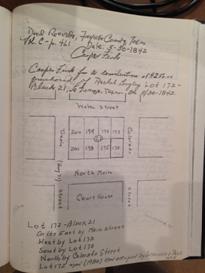
Caspar Fink owned a General Store on lot 172 on the town square. In 2014 there is a Prosperity Bank building on the lot. One of the librarians at the LaGrange public library remembers the original building still standing when she was a child.




August Emmett Townsend and Velma Fisher
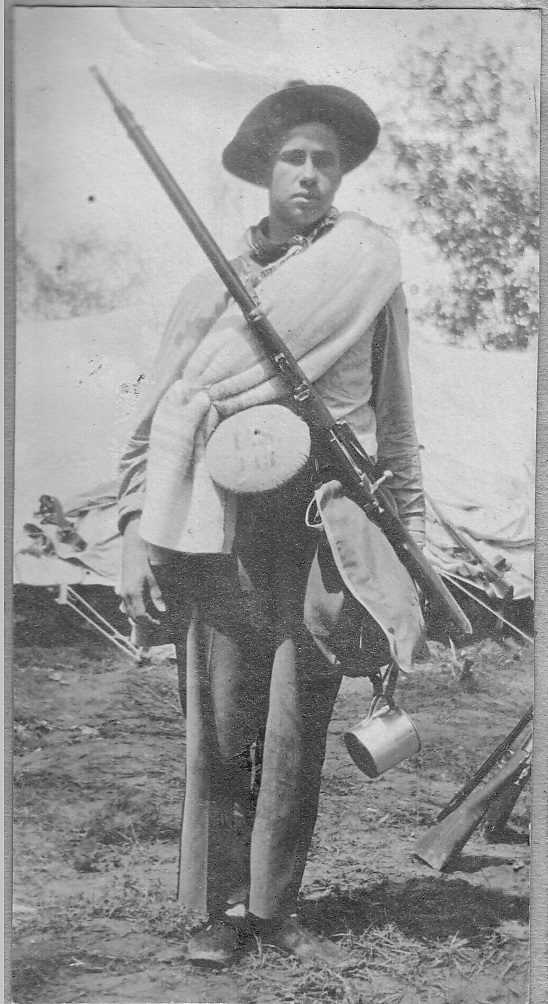

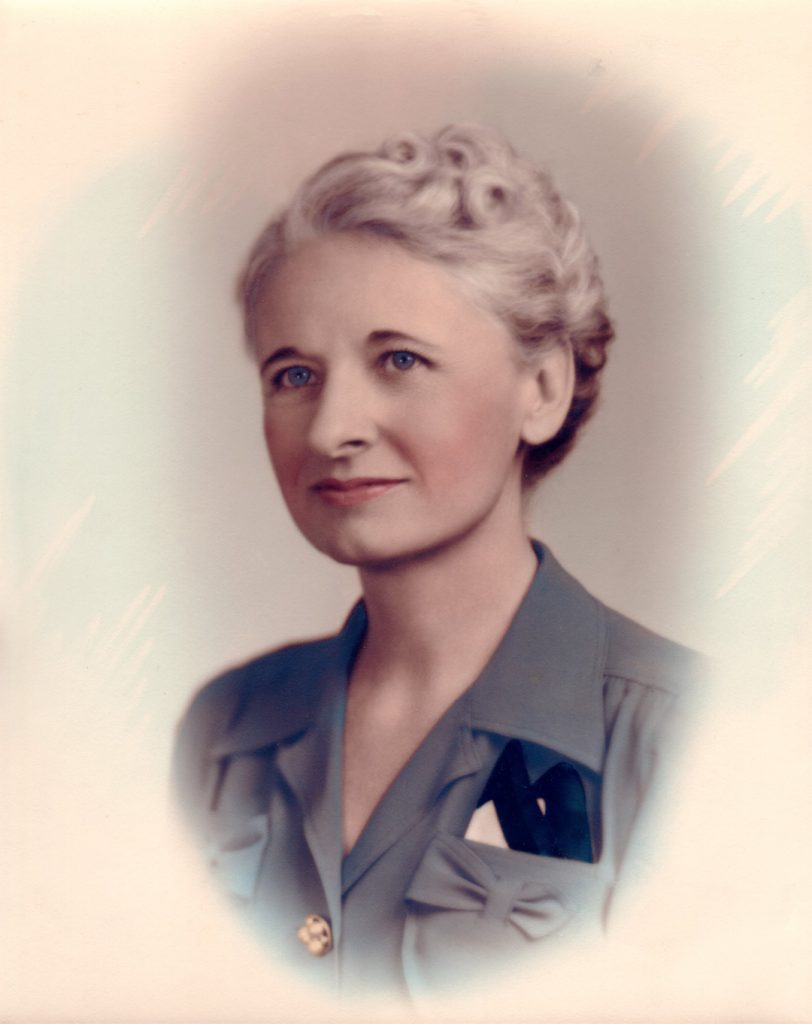
August Emmett Townsend, son of Moses Solon Townsend Jr. and Mary Agnes Fink was born 11 Jan 1891 in Hallettsville, Texas. He died 15 Jul 1954 in Houston, Texas. He married Velma Blanche Fisher, daughter of George Lewis Fisher and Alice Melinda Palmer on 05 Jun 1917 in Houston. She was born 14 Oct 1897 in St. Thomas, Ontario, Canada and died 18 Sep 1952 in Houston.
After graduating from the University of Texas, August moved to Houston with his Mother and began a life-long career in the financial services industry. The Fishers moved to Houston from Canada. They were originally German immigrants to Canada in the decades before the Civil War. August and Velma are both buried near the Fishers in Forest Park Cemetery in Houston, Texas.

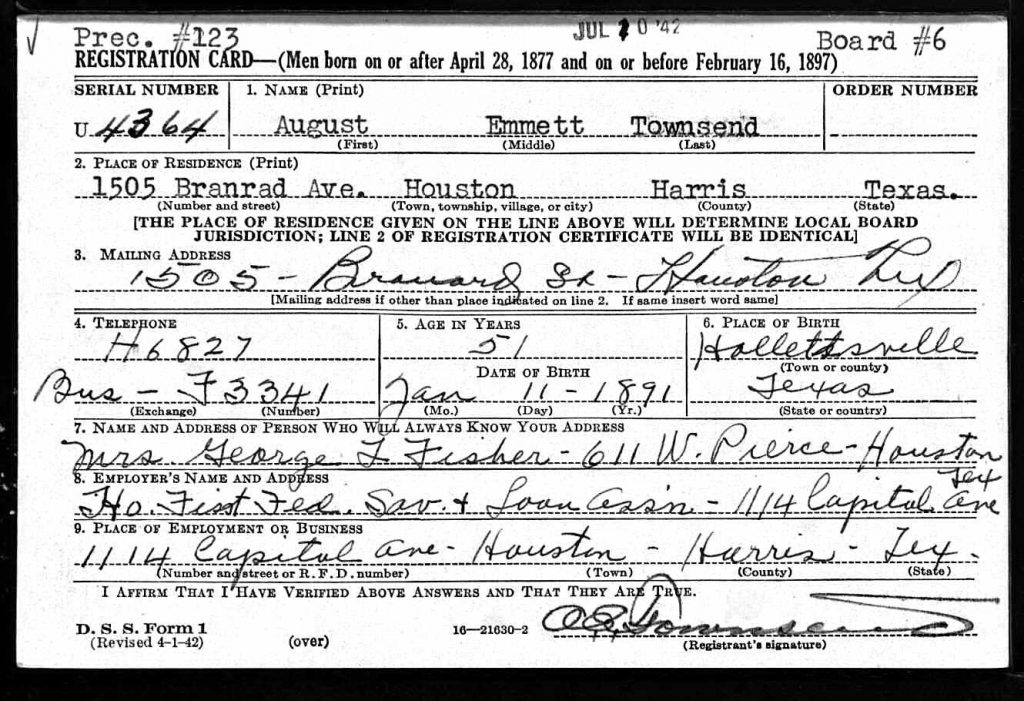
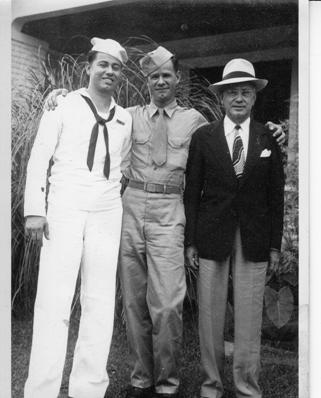
The family recalls that the old Townsend homestead was at 1515 Branard Street in Houston, where Gigi (Augustus) and Grandma Townsend lived. Augustus Townsend worked in downtown Houston as a Vice President of a finance company. Gigi bought the duplex with a garage apartment, down the street, as an investment where Ron and Anne Townsend lived after they were married.
After Gigi died, Uncle Marvin and his wife lived in the old Townsend homestead. Mom and Dad (Ron and Anne) lived in the garage apartment of the duplex. These houses are across the street from the Menil Gallery. The gallery painted them the same color grey and uses the buildings as offices.
George and Alice Fisher



Velma Fisher’s parents were George Lewis Fisher (1868-1953) and Alice Melinda Palmer (1873-1956). George was born near St. Thomas, Ontario, Canada to Lewis and Almira Mann Fisher on September 21, 1868. He married Alice Melinda Palmer, daughter of Jacobe Cummins Palmer and Alice Olympus Tetram. Alice was born on 11 Oct 1873 in Lucan, Ontario, Canada.
Fisher became a music teacher by profession, and a botanist by avocation. He collected plants in North and Central America. His specimens are located in herbariums located all over the United States.
On 16 July 1910 the family entered the US at Detroit Michigan. George was a music teacher married with 2 daughters living in St Thomas, Elgin, Ontario, when he traveled alone via Detroit to Logen, New Mexico. He arrived in Texas in 1911 with his wife, Alice Melinda Palmer (1873-1956) and two daughters, Velma Blanche (1897-1952) and Orpha Irene, where he remained for the rest of his life. In 1920, Fisher visited Santa Catalina Island and “collected a few specimens on the ridge above the School House, Avalon, June 16, 1920. The specimens exist in two complete series in herbaria at the Field Museum, Chicago, and U. S. National Herbarium [Millspaugh & Nuttall, 1923].
In 1930 he was a teacher of instrumental music living at 611 West Pierce Avenue with wife Alice Melinda Palmer (55) and 3 lodgers.
“George L. Fisher represented a type of vanishing American: the amateur naturalist who makes contributions of lasting value to the science of his avocation” [Field and Laboratory 22(1):24, 1942]. Fisher died of kidney cancer at age 86 in Houston, Texas on September 21, 1953. He was survived by his wife and daughter, Orpha Smallwood, and five grandchildren.
http://www.herbarium.unc.edu/Collectors/Fisher_G_L.pdf
George L. Fisher (1868 – 1953) Obituary:
George L. Fisher was born at St. Thomas, Ontario, Canada, 8 January 1867 [Shinners corrects date to 1868 in Taxon 3(8): 247. 1954], and died at his home in Houston, Texas, 21 September 1953. A teacher of instrumental music by profession, Mr. Fisher maintained an enthusiastic interest in botany from his early years, though he never formally trained in the science. He collected herbarium specimens in Europe while a music student in the 1890’s, in Germany and England. After settling in Houston in 1912, he made numerous trips to Mexico, as well as collecting widely in the United States.
From quarters in his garage, he operated the American Botanical Exchange, selling and exchanging plants with individuals and institutions throughout the world, but especially in Europe and in North and South America. He did not maintain a permanent herbarium of his own: any specimens he acquired might be sold or re-exchanged at any time. Occasional price lists were printed from type which he set up himself. In accordance with his own request, specimens and reprints on hand at the time of his death were presented to Southern Methodist University.
The specimens total in excess of 10,000, mostly phanerogams, and are in addition to some 7,500 which the University acquired earlier by purchase. They have been moved to Dallas, but are as yet unsorted and un-mounted. There are no plans to continue the American Botanical Exchange.
William G. Stewart has written a 100 page, illustrated book entitled “George Lewis Fisher (1868-1953)”: director of music and botanist extraordinaire of St. Thomas, Ontario [published St. Thomas, Ont.: W.G. Stewart, 1983]. This book is in the collection of McMaster University, Hamilton Ontario.
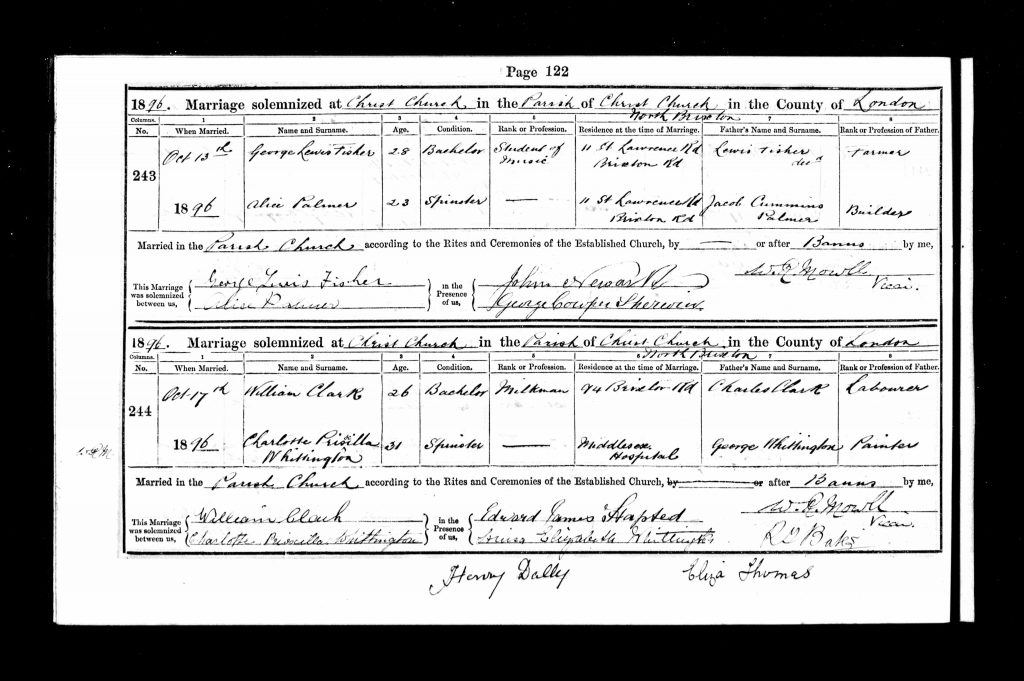
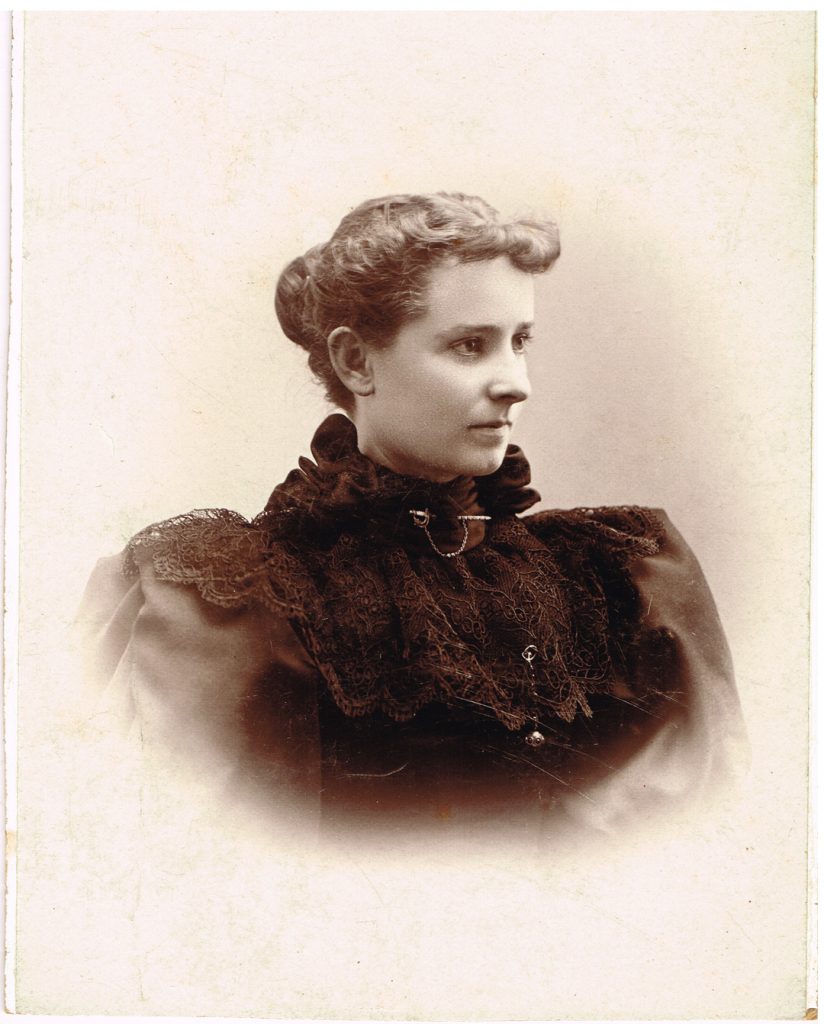

Alice was born Oct. 11, 1873, Lucan, Ontario, Canada; and died May 28, 1956, Houston, Harris County, Texas. She was the daughter of Jacobe Cummins Palmer (1847-1912) and Alice Olympus Tetram (1845-1873).
In 1917 she entered the US at Detroit, MI returning from a 3-month visit to relatives in Canada with daughter Orpha (18). She was living at 708 Euclid Avenue in Houston with husband George Lewis Fisher (50) and daughter Orpha Irene (18). Daughter Velma just married & might also be living with them.
She and George are buried at Forest Park Cemetery , Houston, Harris County, Texas, Plot: Section 12 Whispering Pines.
George’s father was Lewis Fisher, son of George Fischer and Katharina Panter. He was born on 04 May 1824 in Baden-Wuerttemberg, Germany. He died on 14 Oct 1887 in Yarmouth Twp, Ontario, Canada. George’s Mother was Almira Mann, daughter of Elijah Mann and Lois Graves was born on 24 Aug 1832 in Southwold, Elgin, Ontario, Canada. They married 18 Feb 1853 in Regular Baptist Church, Yarmouth, Ontario, Canada. She died on 04 Dec 1916 in Elgin, Ontario, Canada.
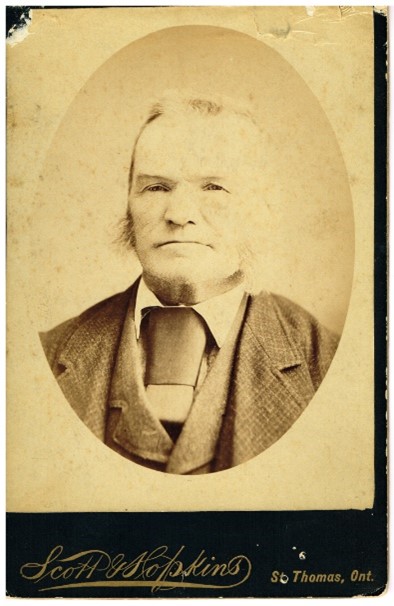

Lewis Fisher’s parents were George Fischer, son of Joseph Fischer and Anna Maria Pfeiffer. George was born on 29 Jan 1791 in Waldulum, Baden-Wuerttemberg, Germany and died on 28 Aug 1873 in Port Stanley, Elgin, Ontario, Canada. He married Katharina Panter, daughter of Georg Panter and Theres Zink on 22 Feb 1819 in Baden-Wuerttemberg, Germany. The Family with their son Lewis emigrated to Canada in 1832. Sadly, Theres died of Cholera on their voyage to Canada in 1832 in Buffalo, New York.
Velma Fisher’s grandmother, Almira Mann’s, ancestors are 17th century New England colonial immigrants. Follow this link to learn about the Colonial Ancestors of Almira Mann
Her great-grandfather Josiah Graves was a Revolutionary War soldier. Follow this link to learn more about his.
Donald Fisher Townsend and Moye Elizabeth Earley
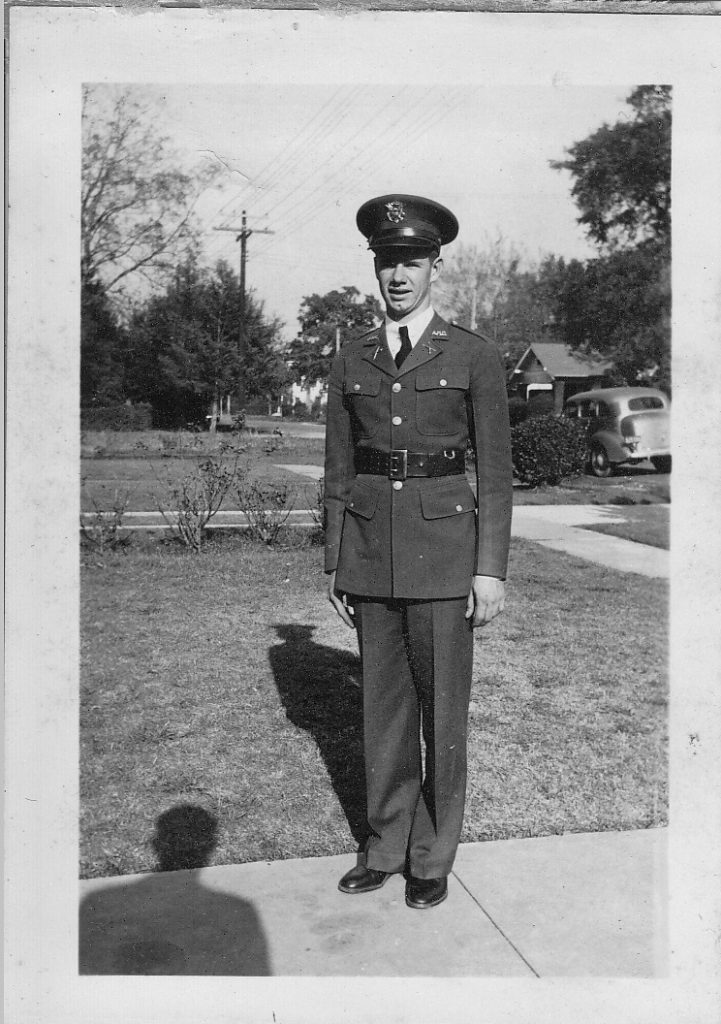
Donald Fisher Townsend, son of August Emmett Townsend and Velma Blanche Fisher was bornon 22 Apr 1919 in Houston, Texas and died on 13 Sep 1950 in Kerrville, Texas. He married Moye Elizabeth (Beth) Earley, daughter of Moye Green (Red) Earley and Pearl Elizabeth Price on 25 Sep 1939 in Jennings, Louisiana. She was born on 19 Mar 1922 in Houston, Texas and died on 30 Oct 1998 in Kerrville. Donald and Beth met while they were Lamar High School
Donald completed one year at Texas A&M when World War two broke out. He joined the Army and was posted in Washington D.C. to the Army Corps of Engineers. The family moved to Washington when his son Ron was an infant. And lived there until he was three or four years old. Donald spent his tour of duty designing pontoon bridges and teaching engineering to army soldiers. He left the service at the rank of Sergeant.
After the Army Donald returned to Houston where he worked as an architect and built homes. He moved the family from Houston to Hunt in 1946 when his father-in-law retired and bought the property in Hunt Texas. They lived at Gramp’s (Red Earley) ranch until their house was built. The house was built on the main road to Kerrville on 12 acres of Gramp’s property. It was across the road from the Guadalupe river.
While living in Kerrville, Donald owned and operated “The Sport Shop’, a sporting goods store at 20 Water St. in downtown Kerrville.

From a family recollection: “Donny went onto study engineering at Texas A and M. When World War II began, as is tradition, with many of his fellow Aggies, Don joined the army and never finished his degree. He married Mee Mee (Beth) in Jennings, Louisiana. Donald Earley Townsend was born in 1940. Dad was born in Alvin, TX when his parents were on their way home from a picnic on February 28, 1941. He was very small since he was born early.
While in the army, he served in Washington D.C. as an engineering instructor, specifically teaching bridge building. Dad remembers it took three days and three nights for the family to travel on a train to join Don in D.C.
After the war the family moved back to Houston before moving to Hunt, TX along with Gramps and Wee Wee, sometime in ’45 or ‘46. While their house (1/2 mile on the right from Heart of the Hills) was being built nearby, they lived at the old ranch house without electricity using coal oil lamps. The ranch was 15 acres next to the Heart of the Hills. Gramps eventually bought a generator (like the ones used with oil rigs-duh!) and a big shed was built around it and this was how they got their electricity at the ranch.
Don opened “the Sport Shop” on Water Street. He was coming home from a buying trip in San Antonio for the store when he veered off the road and died. An autopsy was not performed but it was assumed he died of a heart attack in 1950 when Dad was 9 years old. Gramps bought family plots the cemetery outside of Kerrville, so Don was the first to be buried there. For a while, Gramps hired someone to run the store but eventually sold it.
Dad said when they got their first TV, the big antennae was placed on a nearby hill and either he or Uncle Don would have to go move it when the reception was bad. Dad remembers looking up and holding on to the antennae while moving it. Their telephone was on a party line with their ring being 2 long and two short rings.
Uncle Don and Dad began school in Hunt. The school was one building with 1st through 11th grade. Before and after school, Dad would set traps and hunt small animals such as squirrels, selling the fur to the store down the street from them for pocket money. When Dad finished 8th grade the family moved to Stevens Street (on the corner) in Kerrville. This is where he lived until he left for college at University of Houston. He and Don attended and graduated from Tivy High School. Dad (Ron) played football for the Tivy Antlers and played golf in his spare time.”
